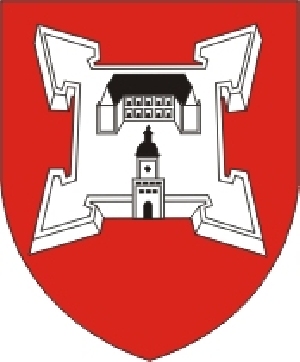- Home
- →
- Cities Of Belarus
- →
- Lyahovichi

Lyahovichi
Show excursion in LyahovichiPhoto - Lyahovichi
Location - Lyahovichi
Lyakhovichi is the administrative center of the Lyakhovichsky district of the Brest region. The city is located on the Ved'ma River, 225 km from Brest, 158 km from Minsk and 20 km from Baranovichi. The Baranavichy-Luninets railway passes through Lyakhovichi. Lyakhovichi is also connected by road with Baranavichy, Nesvizh and Kletsk.
reveal all textHistory of the development - Lyahovichi
For the first time Lyakhovichi is mentioned in the XVth century in connection with the issuance of a royal lord to a local magnate, who grants the right to keep taverns and fairs in the town. In 1508, Lyakhovichi became part of the Novogrudchy Voivodeship, and the next governor of the town was appointed a prominent political figure of the Grand Duchy of Lithuania, tycoon Albrecht Gashtold. He, in turn, allowed his son Stanislav to donate Lyakhovich to his young wife, Barbara Radziwill. After the death of her first husband, Barbara married the future king of Poland Stanislav Augustus Poniatowski, who, after the death of Barbara, got the town, which later became the royal property.
In 1569 Lyakhovichi passed to the Khodkevich family, who owned the town for about 40 years. Under Jan Karol Hadkevich in the 1590s in Lyakhovichi a new castle of bastion type was laid. The facility is located on the high left bank of the Witch River. The fortress had a regular rectangular layout with far-reaching corner bastions, around the perimeter it was rounded off with a water moat 20 meters wide. The courtyard was protected by a high bulkhead, reinforced with brick and stone. Inside the bastions rose brick cavaliers. Inside the ramparts were located poser, allowing the garrison to move from place to place and served as shelters from the oncoming fire. At the bastions there were casemates for ammunition. It was possible to enter the castle-fortress through a water ditch over the bridge, the last part of which was elevating. The lifting mechanism was also on the gate - their opening was closed by a powerful stone grid. The gates had a beautiful superstructure in the form of a tower with a spire.
After the death of the daughter of Jan Karol Khodkevich Anna in 1635, who was married to Jan Stanislav Sapega, Lyakhovichi finally passed on to the Sapeg family, one of the richest and most noble Magnat families of the Grand Duchy of Lithuania. During the 17th century, the Liahovichi castle was repeatedly attacked and besieged. During the Russian-Polish war of 1654-1667. the troops of A.N. Trubetskogo in 1655 burned the city, but did not dare to besiege the castle. In 1660, the fortress also failed to take the Russian voivode Ivan Khovansky. In 1706, during the Northern War, the castle was surrendered to the Swedes and partially destroyed.
As a result of the second section of the Polish-Lithuanian Commonwealth of 1793, Lyakhovichi became part of the Russian Empire. The active development of the town began in the 1870s. in connection with the construction of the Vilno-Pinsk railway in these regions. Logging production was developed in Lyakhovichi. With the beginning of the First World War, the territory of the Lyakhovichsky region became a zone along which the front line passed. The western part was occupied by German troops from 1915. The following year, the Russian army made an unsuccessful attempt to attack, known in history as the Baranovichi offensive operation of the Western Front. The German occupation continued until the autumn of 1918. Right after the retreat of the German troops, the Poles came to Lyakhovichi. According to the results of the Riga Peace Treaty of 1921 between Poland and Soviet Russia, according to which Western Belarus was part of the Second Rzecz Pospolita. Lyakhovichs were part of Poland until 1939, when fascist Germany launched the Second World War. Since the autumn of 1939, Lyakhovichi, as part of Western Belarus, became part of the BSSR. January 15, 1940 was formed Lyakhovichsky district. Since the beginning of the Great Patriotic War, the area was occupied by the Nazi invaders from June 1941 to July 6, 1944. During the war in Lyakhovichi, a Jewish ghetto was organized into which people were driven from Lyakhovich and nearby villages.
reveal all textTourism potential - Lyahovichi
You can visit Lyakhovichi on the way to Baranavichy or Brest. The building of the former church of St. Jazep, built in 1907, has been preserved in Liakhovichi.
Today Lyakhovichi is a modern industrial city in which educational and cultural institutions function.
